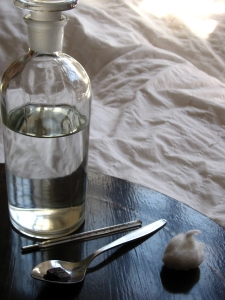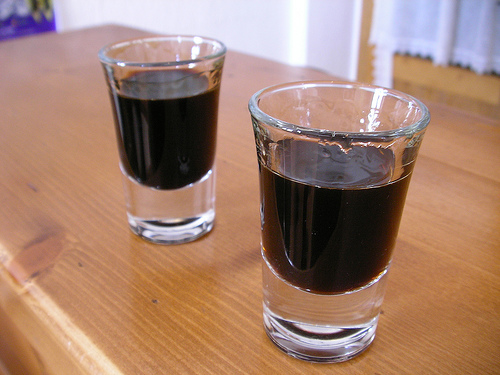 A friend of the Kingdom has recently pointed our attention towards an article concearning the medical uses of our dear substance, Liquiritia. The said article, published as part of “Health-Care-Tips.org”, contains the following bits of precious information:
A friend of the Kingdom has recently pointed our attention towards an article concearning the medical uses of our dear substance, Liquiritia. The said article, published as part of “Health-Care-Tips.org”, contains the following bits of precious information:
“Licorice (often spelled “liquorice” in ancient herbals) is a member of the legume family, whose cousins include beans, peas and the herb broom.” At this point, we have established familiy relations: our kingdom, it seems, has new-found cousins in vegetables and beans, as well as in a herb –whose uses we will look into– named after a popular household utility.
And the article goes on: “its roots have two primary desirable qualities: first, some varieties of licorice root are fifty times sweeter than sugar and may be chewed or eaten as a sweet”. We are, of course, glad to hear that Liquiritia has “desireable” qualities; we have surely worked hard to make this kingdom as enticing as we can. But what really calls our attention is the fact that the licorice root is FIFTY TIMES SWEETER than sugar. Personally, I can make the effort to imagine a flavour twice as sweet as sugar, or maybe even THREE, or FOUR times… but FIFTY TIMES is far beyond what my taste-bud imagination can dare to conjure…
After this brief but illuminating introduction, the text goes on to talk about what will become the main issue: Liquiritia in the medical world. Thus, we are told that “licorice has been for thousands of years sought after for its reputed medicinal qualities”; followed by a piece of information that establishes Liquiritia, so to speak, as the most synaesthetic of plants, for it is said to “cross the lines” between “fragrance, flavor and medicinal herb”.
Then comes a rather interesting philological section, in which we are informed that “Liquiritia”, “Liquorice (Lycorys in the thirteenth century)”, “Regolizia”, “Lacrisse”, “Lakriz”, “Lacris” and “Reglisse” all evolved from the word Glycyrrhiza; after which we are told that liquiritia “was so valued in ancient Egypt that even King Tutankhamen was buried with a supply” (!!), and also –a fact that will interest all melancholics– that “licorice is the second most prescribed herb in China, where it is suggested for treatment of the spleen” (if only Baudelaire had known…).
If anyone still wonders why we have chosen such a queer plant as the trademark of our new kingdom, his doubts will surely vanish when he hears that Liquiritia is used to combat, among other ailings:
Asthma
Depression
Fatigue
Ulcers
Stress
[ring any bells?]
and –listen to this– it is “used to strengthen and balance the female reproductive system”
Furthermore –not to let down our readers with a taste for the less healthy–, Liquirita is reportedly “also used as an emulsifier to create foam in drinks and alcoholic beverages”. [I wonder what a Guinness would taste like with liquorice-flavoured foam…]
Funnily enough, however, the author of the article is reluctant to recommend the ingestion of liquiritia for an extended period of time, for, he argues, “more than 4 to 6 weeks has not been thoroughly studied. So should not be taken in excess”. I am sure, considering the benefits ennumerated above, we could find candidates for a long-term experiment. Anybody care to try?
L.


